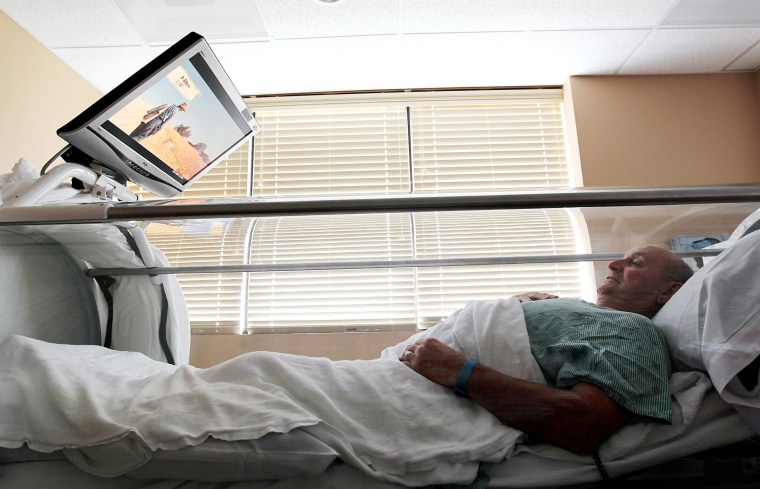Hyperbaric oxygen therapy. Have you ever heard of it? The Internet sure has.
Centers and clinics tout the benefits of sitting in a tank breathing 100 percent oxygen at higher than atmospheric pressure for treating autism, infant brain trauma, multiple sclerosis, chronic fatigue, cerebral palsy and many other conditions.
There’s just one problem: There is no solid evidence that hyperbaric oxygen therapy does anything for any of these disorders.
It does have a proven role in helping decompression sickness and carbon monoxide poisoning. But at $2,000 for a 90-minute run, a fairly easy to deliver treatment has a lot of believers and proponents.
The latest rage for hyperbaric oxygen is to use it to treat veterans suffering from traumatic brain injury, concussions or PTSD. The same websites are full of testimonials from vets, football coaches and families of vets saying that time in the tank helped them. The lack of an effective treatment for any of these conditions makes hyperbaric oxygen hyperattractive both for those seeking some source of hope and those selling it.
There has been a lot of pressure to get VA hospitals to offer more hyperbaric therapy. And lots of facilities with empty hyperbaric chambers are itching to get in the game.
"The researchers were told by some participants that they felt better, that their traumatic brain injury or PTSD symptoms improved, but the researchers were able to prove that these 'improvements' were placebo effects."
Which makes it all the more unfortunate that a new paper evaluating hyperbaric oxygen therapy for PTSD and mild traumatic brain injuries in JAMA Internal Medicine received little attention in the media. The study found “no additional benefits … from the use of hyperbaric oxygen therapy for persistent post-concussive symptoms after mild traumatic brain injury.”
The researchers were told by some participants that they felt better, that their traumatic brain injury or PTSD symptoms improved, but the researchers were able to prove that these “improvements” were placebo effects. Those in the tanks felt better because they really wanted to believe they would feel better even when they just breathed room air.
The study confirmed two previous randomized blinded studies that also involved breathing air vs. breathing oxygen, which showed hyperbaric oxygen provided no additional therapeutic benefit for patients with mild traumatic brain injuries other than placebo effects.
When it comes to awful diseases, we want to believe that doctors and technology can help. Often they can. But sometimes they can’t — or worse, the technology is used to make a buck off the sick and their families.
There is always more room for research on the value of hyperbaric oxygen therapy for treating all sorts of disorders and injuries. Right now there is no room at the VA or in reimbursement for using this treatment on our veterans or others who have suffered brain injuries.
